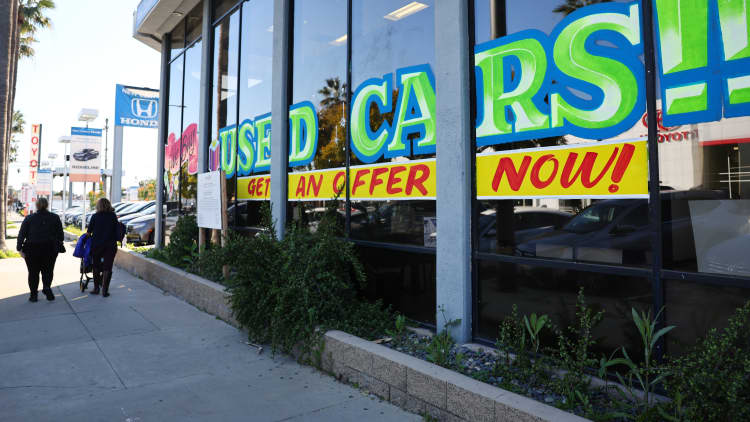
The United Auto Workers union is launching an unprecedented campaign to organize 13 non-union automakers in the U.S. after securing record contracts with the Detroit automakers.
The union said Wednesday the drive will cover nearly 150,000 autoworkers across BMW, Honda, Hyundai, Lucid, Mazda, Mercedes-Benz, Nissan, Rivian, Subaru, Tesla, Toyota, Volkswagen and Volvo.
As part of the campaign workers are signing electronic cards in support of union efforts to potentially organize U.S. plants from those automakers.
It is not guaranteed that the union would push to organize every plant or automaker that participates in the campaign. Overall, workers would need to vote in support of UAW representation.
UAW President Shawn Fain has said the union’s next mission after ratifying record contracts with General Motors, Ford Motor and Stellantis was to expand its ranks. The contracts ratified by the “Big Three” Detroit automaker include at least 25% hourly pay raises, the reinstatement of cost-of-living adjustments and enhanced profit-sharing payments, among other benefits.
“To all the autoworkers out there working without the benefits of a union: Now it’s your turn,” Fain said in a video posted online.
Fain previously vowed to move beyond the “Big Three” and expand to the “Big Five or Big Six” by the time its 4½-year contracts with the Detroit automakers expire in April 2028.
Launching major organizing campaigns simultaneously breaks with tradition for the union. Typically, it would spend months, if not years, gaining support of workers inside factories to eventually vote on UAW representation.
But Fain has repeatedly rewritten the rules of engaging with automakers during his short time as UAW president — he negotiated deals with Ford, GM and Stellantis simultaneously, rather than identifying a lead company on which to focus efforts — and organizing non-union automakers would greatly assist the union’s bargaining efforts and scale.
UAW membership has been nearly halved from roughly 700,000 members in 2001 to 383,000 at the beginning of this year. It peaked at 1.5 million in 1979.
Several non-union automakers such as Hyundai, Toyota and Honda announced plans to increase worker wages in the weeks following the UAW deals with Ford, GM and Stellantis.
Still, the UAW has a poor track record with trying to organize non-Detroit automakers.
The UAW has previously failed to organize foreign-based automakers in the U.S. Most recently, plants with Volkswagen and Nissan fell short of the support needed to unionize. The UAW has previously discussed organizing Tesla’s Fremont plant in California, with little to no traction in those efforts.
At the 2023 DealBook Summit in New York later on Wednesday, Musk was asked about the UAW’s aims. He replied: “If Tesla gets unionized it will be because we deserve it and we failed in some way.”
The UAW said Wednesday one of the “strongest campaigns” thus far is Toyota’s assembly complex in Georgetown, Kentucky, where 7,800 workers make the company’s iconic Camry and highly profitable RAV4 and Lexus ES.
“Workers across the country, from the West to the Midwest and especially in the South, are reaching out to join our movement and to join the UAW,” Fain said in the video. “The money is there. The time is right. And the answer is simple. You don’t have to live paycheck to paycheck. You don’t have to worry about how you’re going to pay your rent or feed your family while the company makes billions.”









